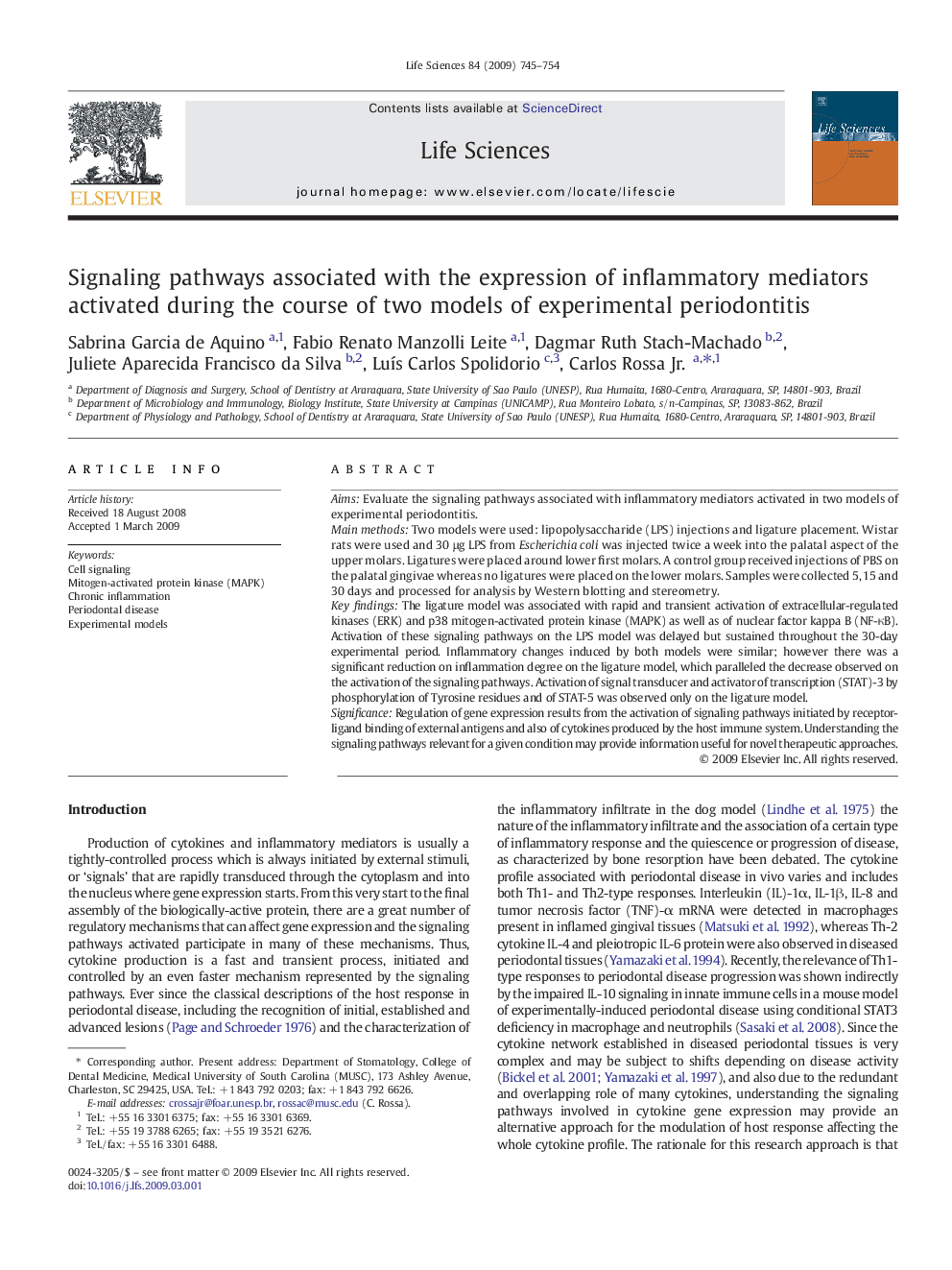| کد مقاله | کد نشریه | سال انتشار | مقاله انگلیسی | نسخه تمام متن |
|---|---|---|---|---|
| 2552251 | 1560726 | 2009 | 10 صفحه PDF | دانلود رایگان |

AimsEvaluate the signaling pathways associated with inflammatory mediators activated in two models of experimental periodontitis.Main methodsTwo models were used: lipopolysaccharide (LPS) injections and ligature placement. Wistar rats were used and 30 μg LPS from Escherichia coli was injected twice a week into the palatal aspect of the upper molars. Ligatures were placed around lower first molars. A control group received injections of PBS on the palatal gingivae whereas no ligatures were placed on the lower molars. Samples were collected 5, 15 and 30 days and processed for analysis by Western blotting and stereometry.Key findingsThe ligature model was associated with rapid and transient activation of extracellular-regulated kinases (ERK) and p38 mitogen-activated protein kinase (MAPK) as well as of nuclear factor kappa B (NF-κB). Activation of these signaling pathways on the LPS model was delayed but sustained throughout the 30-day experimental period. Inflammatory changes induced by both models were similar; however there was a significant reduction on inflammation degree on the ligature model, which paralleled the decrease observed on the activation of the signaling pathways. Activation of signal transducer and activator of transcription (STAT)-3 by phosphorylation of Tyrosine residues and of STAT-5 was observed only on the ligature model.SignificanceRegulation of gene expression results from the activation of signaling pathways initiated by receptor-ligand binding of external antigens and also of cytokines produced by the host immune system. Understanding the signaling pathways relevant for a given condition may provide information useful for novel therapeutic approaches.
Journal: Life Sciences - Volume 84, Issues 21–22, 22 May 2009, Pages 745–754